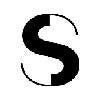The IoT and Creative Computation
With the rising popularity of code as a creative medium, the Internet of Things (IoT) is a particularly exciting field for creative technologists. What exactly is the IoT? It is a network of interconnected devices that can read and respond to information.
Whether it’s your activity tracker that counts how many steps you walk in a day, or your local transportation app which sends you an alert when your bus is late, the IoT is already all around us. For creative technologists IoT is an open field with endless possibilities, and a chance to make an impact.
How can we use the IoT as a framework for teaching creative computation in higher education? To understand the IoT, we first need to understand the underlying technology of physical computing.
Physical Computing and the Maker Movement
For decades, enthusiastic hobbyists have been tinkering in their sheds, cooking up homemade alternatives to mainstream technology. Tired of big corporations using strategies like planned obsolescence to exploit our consumeristic impulses, these inventors were searching for a way to use technology for self-expression and fun. Over time, this came to be known as the maker movement, and has grown in popularity.
The maker movement can be seen as an extension of DIY culture that emphasized the incorporation of technology. With microcontrollers like the Arduino, and credit card sized computers like the Raspberry Pi, coding, building and designing with hardware was democratized.
With the use of sensors that can detect a range of physical properties like light, motion, and temperature, inventors can transform any ordinary object into a smart, sensing device that interacts with their surroundings. Today, the application of this ecosystem of sensors and programmable microcontrollers is known as physical computing.
How to Get Started with IoT
It can be helpful to think of the IoT as one particular, sophisticated application of physical computing technology. IoT refers specifically to the use of embedded computers in a networked environment.
Many IoT systems are referred to as “smart” which is actually an acronym and stands for Specific, Measurable, Achievable, Relevant, Time-bound.
For example, in the case of a smart traffic monitoring system, sensors collect information, and automatically trigger alerts to send out warnings.
That warning is interpreted by another endpoint of the IoT, for example a navigation map, which automatically reroutes all drivers so that they can avoid the affected road. The user received information from the map, which is actually part of a network of interconnected systems — or things.
It can be challenging for someone with no background in engineering to get started. This is precisely why we built Tekniverse, an integrated platform for designing IoT projects. Tekniverse consists of Bluebird, a Bluetooth enabled microcontroller that has built in sensors and outputs.
Bluebird can be programmed wirelessly using the Tekniverse Code Builder, an intuitive, drag and drop programming environment that is beginner friendly. Lastly, Control Center is a data dashboard where you can see the data coming in from sensors in real time and compare multiple devices side by side.
What kind of projects can you build with Tekniverse? You can create everything from personal activity trackers, to smart home devices that respond to environmental light. Code Builder comes integrated with a range of application programming interfaces (APIs), enabling you to also use real time data about the International Space Station, earthquakes, and the weather.
IoT in Higher Education
Just like classes for creative coding platforms like Scratch, p5.js, and Max/MSP, courses on Physical Computing and the Internet of Things are rising in popularity at several Media and Technology institutions.
Often taught in conjunction with digital fabrication technologies like 3D printing, CNC, and laser cutting, it is part of a broader attempt to explore the role of computation in our built environment, beyond computer screens and smartphones.
Interdisciplinary labs at Harvard, NYU, and Carnegie Mellon University all stress the importance of creativity when designing smart, connected devices of the future.
IoT for Artists, Designers, and Creatives
The Internet of Things is a concrete way in which technology is closing the gap between artists and scientists. It is an exciting direction for creative practitioners, as a lot of their existing skills can help them imagine novel interactions in the world.
There are many models of ideating or design thinking that can take a concept from start to finish. You can use a simple ideation model like the one below to help articulate the problem you’re trying to solve for.
In this mad libs style game, you set a “mission” for the system you are trying to create, for example a secret code, and then fill in the blanks to explore potential solutions. The next step is to take it further with thought questions which help you expand and iterate on your idea. Our sample questions include:
- Does the system have feedback?
- Does the data need to travel a long distance?
- Could this be used every day?
As the IoT can often be preoccupied with data collection and analysis at a large scale, it doesn’t need to involve deliberate human interaction. However, the most rewarding way to get started exploring its potential is to design playful, tangible interactions.
Beyond the human presence, there are a range of potential IoT applications in high impact areas like environmental monitoring, transportation, and health. Designer and creative technologists can offer novel and imaginative solutions for these systems using their critical thinking skills.
With the Master in Creative Computing, you can learn how maker tools like Tekniverse can expand your toolset and help you design an exciting future. What are you going to create?
Deren Güler, founder at Teknikio and Creative Computing Master’s Instructor.
